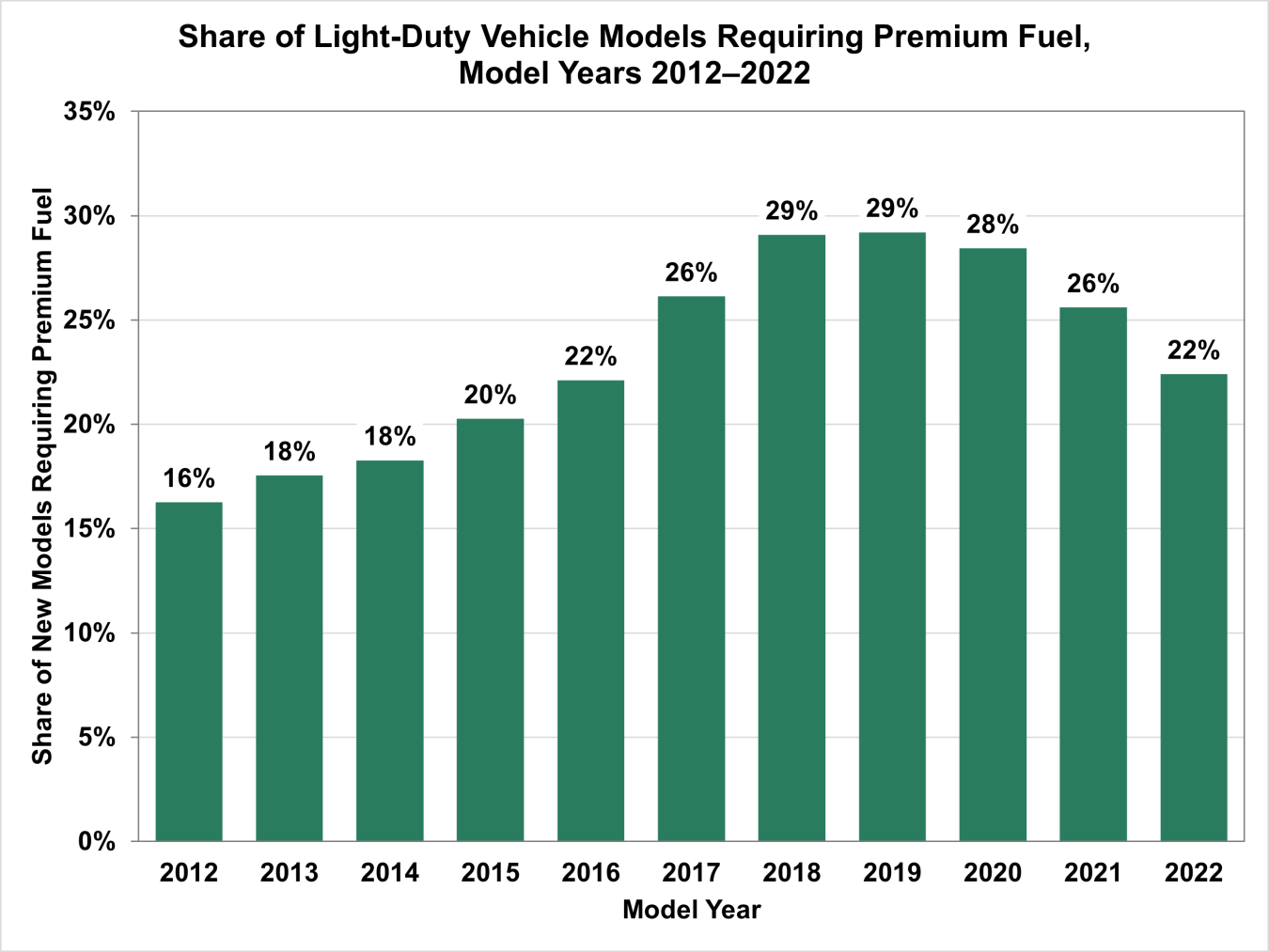As vehicle manufacturers have pursued better fuel efficiency and performance, they have employed greater use of downsized, high-output engines that are inherently more efficient.
June 20, 2022As vehicle manufacturers have pursued better fuel efficiency and performance, they have employed greater use of downsized, high-output engines that are inherently more efficient. Those engines often rely on higher compression ratios and turbocharging that can require higher-octane premium fuel. From 2012 through 2018 the number of new models requiring premium fuel increased from 16% to 29%. In recent years, however, manufacturers have been turning to greater electrification of their vehicles to boost performance and fuel economy, which has likely contributed to the leveling off and subsequent decline in the number of models requiring premium fuel since 2018.
Vehicles that require premium gasoline should always be fueled with premium gasoline as stated in the owner’s manual. Vehicles that are engineered for regular gasoline would likely see little or no benefit from using premium fuel. Vehicles that specify premium recommended (but not required) may see some benefit to performance and fuel economy, but the fuel economy benefit is usually not large enough to offset the added cost of the premium fuel. For more information about octane, visit FuelEconomy.gov’s Selecting the Right Octane Fuel page.

Source: U.S. Department of Energy and U.S. Environmental Protection Agency, Fueleconomy.gov data, accessed May 3, 2022.

